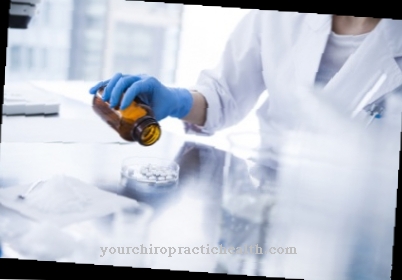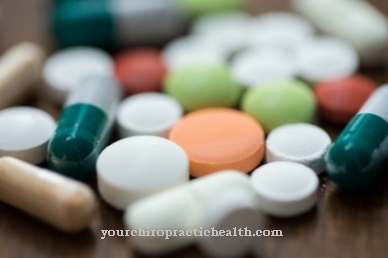Lincomycin is an antibiotic that is only approved for use in veterinary medicine in Germany. It is particularly effective against gram-positive bacteria. It is also approved for human use in the United States and Canada.
What is lincomycin?
Lincomycin (chemical molecular formula: C18H34N2O6S) is a drug belonging to the class of antibiotics. In Germany, lincomycin is only approved in veterinary medicine. In the USA, however, the substance is also used in humans.
Lincomycin is one of the lincosamides, all of which are antibiotic. The molar mass of the substance is 406.54 g / mol. The drug is obtained by isolating it from the bacterium Streptomyces lincolnensis.
From a chemical point of view, lincomycin is composed of propylproline and the amino sugar methylthiolincosamide, which are linked by an amide bond. Lincomycin hydrochloride monohydrate is normally used medicinally. Lincomycin is particularly effective against gram-positive bacteria.
Lincomycin is in the form of a white to off-white crystalline powder and has only a faint odor. The drug is soluble in water. Overall, the substance is slightly basic. The solution for injection is colorless to pale yellow. The melting point of the hydrochloride monohydrate is around 145 to 147 degrees Celsius. That of the monohydrochloride at around 155 to 157 degrees Celsius.
Pharmacological effect on the body and organs
The spectrum and mode of action are similar to that of clindamycin, which is also approved for use in humans in Germany. However, it's less potent.
As with the macrolides, the effect of lincomycin is based on the inhibition of protein synthesis by binding to the 50-S subunit of the bacterial ribosomes.
Gram-positive pathogens are particularly sensitive to lincomycin. For this reason, the substance is effective against streptococci and staphylococci, for example. Depending on the dosage and sensitivity of the pathogen, the effect of the substance is either bacteriostatic or bactericidal.
The active ingredient accumulates in the macrophages, the "phagocytes" of the immune system, and is transported with them to the place of action. Lincomycin is metabolized exclusively in the liver. The substance is excreted in the faeces.
A sufficient concentration is not reached in the CSF to have an effect.
Medical application & use for treatment & prevention
When considering its medical use, it is first noticeable that lincomycin is not approved for use on humans in Germany. So there is no human use of the substance in Germany. In the USA, however, lincomycin is also used in human medicine.
It can be stated that the substance covers the same spectrum of activity as the macrolides and the substance clindamycin, which also belongs to the group of lincosamides, but is less potent than clindamycin and less well tolerated than the representatives of the macrolides.
In veterinary medicine, lincomycin is used against all bacteria that are sensitive to the active ingredient. It is generally used for various bacterial infections in pets and farm animals, with the effectiveness being best for respiratory infections. In veterinary practice, lincomycin is a commonly prescribed antibiotic.
Risks & side effects
The method of application of the lincomycin is of great importance. In herbivores, it must not be administered orally, as this can lead to fatal side effects. For this reason, horses, ruminants, guinea pigs, rabbits and hamsters can only receive lincomycin parenterally. Oral administration of these animals can lead to fatal inflammation of the colon from lincomycin-resistant clostridia.
If lincomycin is administered intramuscularly, a painful swelling at the injection site can occur. It should be noted that intravenous administration, if carried out too quickly, can trigger thrombophlebitis, a drop in blood pressure and cardiac arrest.
Oral application can lead to gastrointestinal inflammation with vomiting and bloody diarrhea.
In case of hypersensitivity to the active ingredient, it must not be administered.
Lincomycin is not approved for human treatment in Germany.



























